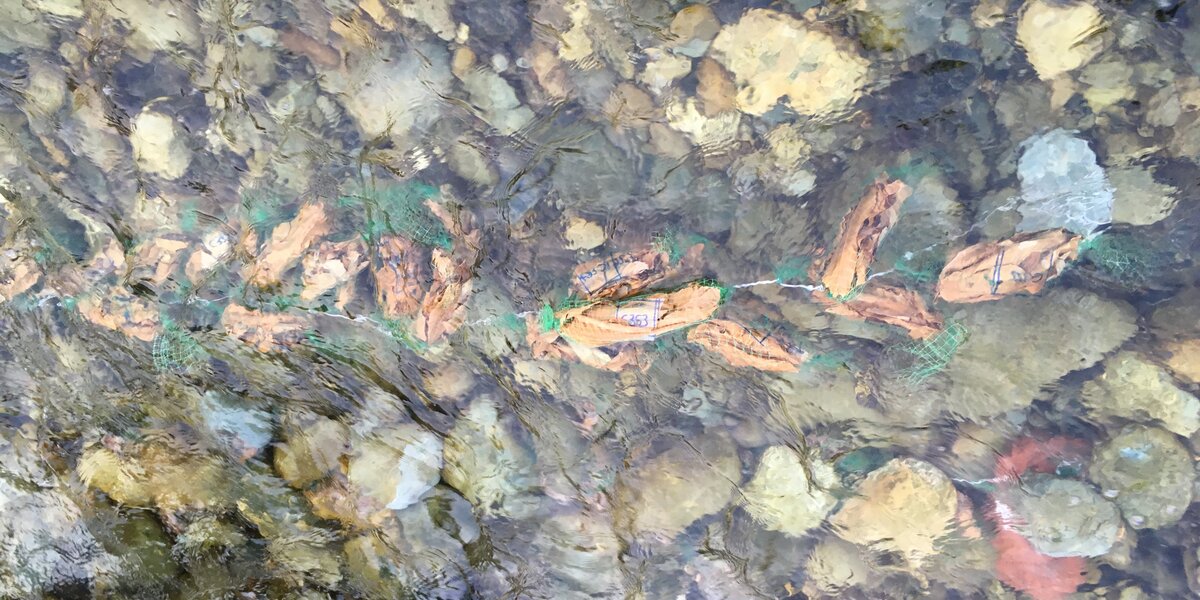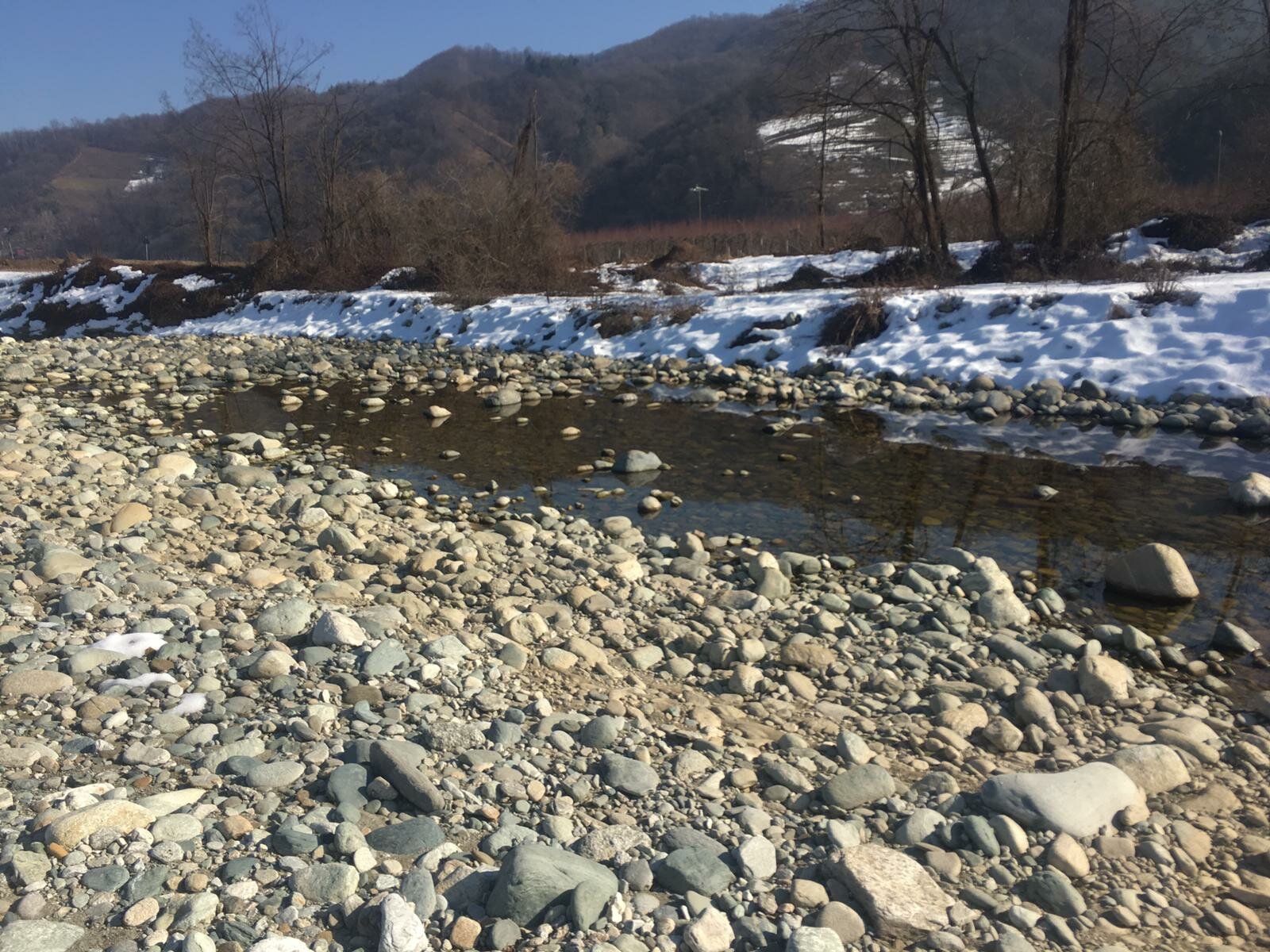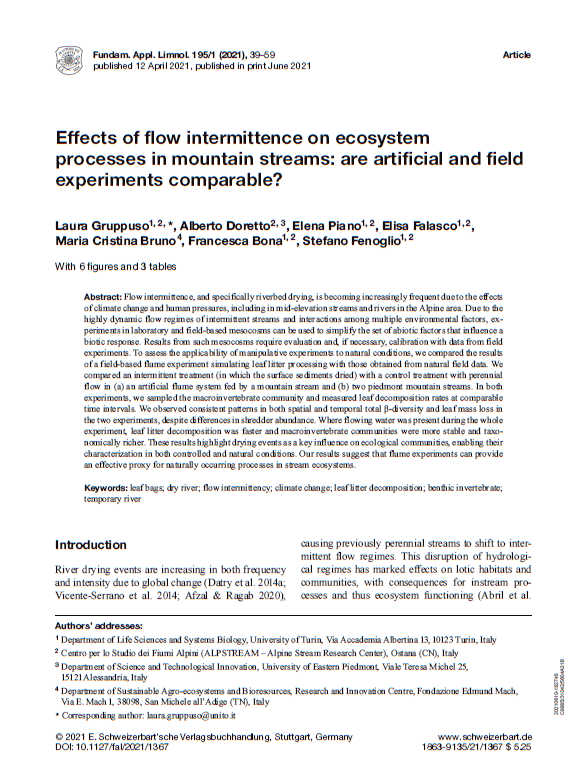
Functionality of Alpine River Systems
An important line of research at ALPSTREAM is dedicated at studying how Alpine rivers "work". These systems are highly heterotrophic, meaning that the energy sustaining their food webs largely comes from external sources, which mainly consist of organic detritus with terrestrial-origin. In this context, it is essential to understand how climate change might alter decomposition processes and river macroinvertebrate communities in Alpine watercourses. These rivers are generally considered as perennial: however, over the last years, they have been experiencing dry periods due to the combined effects of global climate change and local human pressures (e.g. water abstraction).

To study the decomposition process in Alpine watercourses, we used the leaf litter bag technique, by building packets of leaves (in our case, Oak and Chestnut) envelopped in a 1 cm mesh to allow colonization of river macroinvertebrates. This technique is widely used to analyze the functionality of watercourses. After six sampling sessions, performed every 21 days, we analyzed the following parameters:
i) the remaining leaf mass at each date and site within our leaf bags;//
ii) the community of river macroinvertebrates present inside;//
iii) the community of bacteria and fungi involved in the decomposition process.

The results obtained indicated that:
i) in sites subject to drought, the decomposition process is slower and less effective compared to perennial sites;
ii) water temperature in intermittent sites undergoes frequent fluctuations and can be used as proxy to identify dry periods;
iii) the macroinvertebrate community in sites experiencing droughts is less stable, with specialist taxa replaced by generalists, and multivoltine organisms replaced by univoltine ones;
iv) the microconsumer community shows species-specific associations with leaf type for fungi, while bacteria appear to be more sensitive to desiccation and thus more affected by the loss of surface water.
This project has provided valuable insights to better understand the effects of droughts on Alpine rivers, which are among the most threatened ecosystems in terms of biodiversity and functionality in the context of global climate change.

